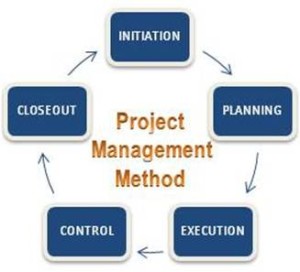 When managing a project there is a process involved to determine, in order, tasks and actions to be executed to achieve desired results.
When managing a project there is a process involved to determine, in order, tasks and actions to be executed to achieve desired results.
The project management method is applied not only in construction but consciously or subconsciously to events that occur in daily life.
Whether building a house, landscaping your yard or taking on a remodel project, there is a sequence of actions that must happen to get you to your desired result.
The project management method required for construction is broken into distinct areas and methodologies based on the type of project, potential uncertainties in the work and competition in the local or regional markets.
To incorrectly assess the scope of work can mean increased cost, delays in completion and not being competitive in your market.
Below is a basic breakdown of the different types of construction project management methods and the stages included in each.
ECM or Event Chain Methodology
ECM is used for projects where tasks or activities can initiate a chain of events. In event chain methodology, this takes into consideration projects that have a large number of “events” or risks that can alter the course of a project.
The ECM approach to scheduling takes into consideration potential risks and uncertainties and provides a method, based on analysis, to incorporate them with known activities in a construction schedule. The result will reflect better schedule accuracy in terms of time and cost.
This is far different from a traditional project schedule where each stage is predetermined and executed within a defined window.
Traditional Project Management Method
This is the most familiar of the methodologies. A traditional approach to construction management begins with five different stages:
- Project Initiation
- Project Planning
- Execution of the Work
- Validation and Control
- Completion and Closeout
The stages are broken down into detail and are generally performed consecutively — one stage begins after the previous stage ends — a step by step approach. It is, however, common for overlapping in stages but mostly the work is very linear in nature with minimal risk to significant change.
Critical Path Methodology or CPM
The Critical Path Method was actually developed by the DuPont Corporation back in 1957. In their CPM Method, each task of the project is given a specific time duration together with an analysis of any resources needed to carry out that work within that time frame.
Tasks that are critical to completion of the project are linked together to determine the best possible time efficiency for completing the project.
Because each activity of the critical work has a specific time, then any delays or extensions to that time would extend the completion date by the amount of that extension. For example, if an activity is scheduled for 10 days and it takes 12 days to complete then the end date of the schedule would be extended by 2 days.
This does not take into consideration any “float” that may be built into a schedule. Float would be you anticipate an activity to take 8 days but the critical path reflects 10 days for that same activity giving you two “hidden” days for unknown circumstances.
CCPM or Critical Chain Project Management Method
Unlike the Critical Path Method of Project Management where focus is on time constraints, the CCPM method focuses on resources. What I mean is that the “critical chain” is the sequencing of work activities for more efficient handling by the “resources”.
If the time schedule for work completion is less strict than what is required in a critical path schedule, then work can be distributed in a more collaborative way. The benefits of this type of project management method, although not used for the typical construction project, can mean:
- More effective use of resources
- Reduction in overall work schedule due to efficiency
- Focus evenly on both critical and non-critical work activities
Industries where this type of management method is most utilized would be NASA, the U.S. Navy, the U.S. Air Force, Lucent and similar institutions, agencies and organizations.
Filed under: Construction





